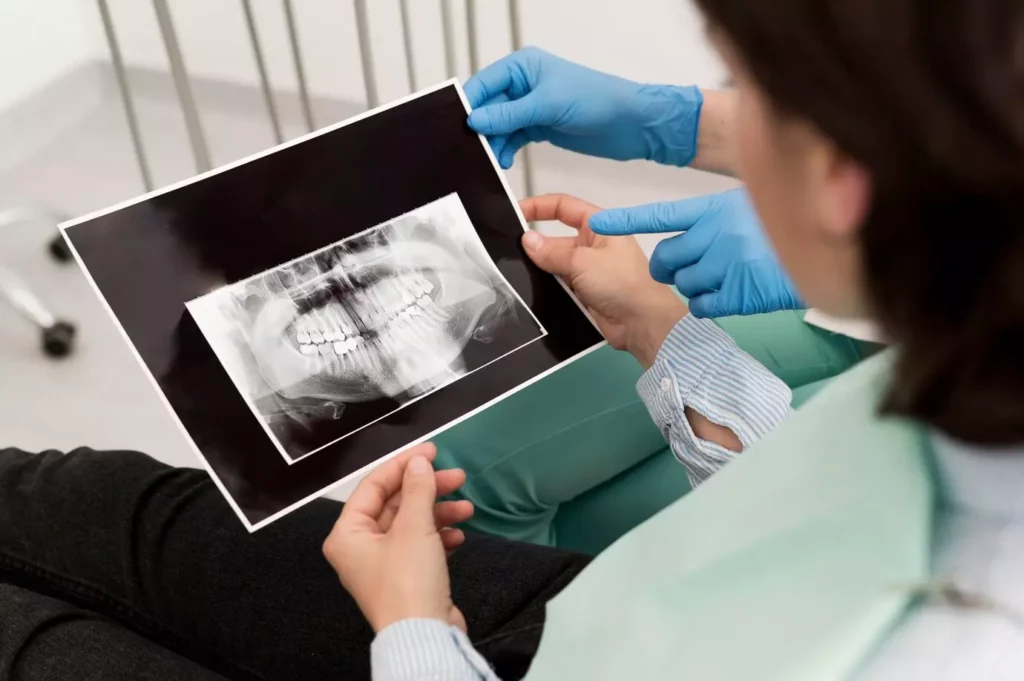
Clifton Dentist - Bone Graft Dental Implants
Need a consult?
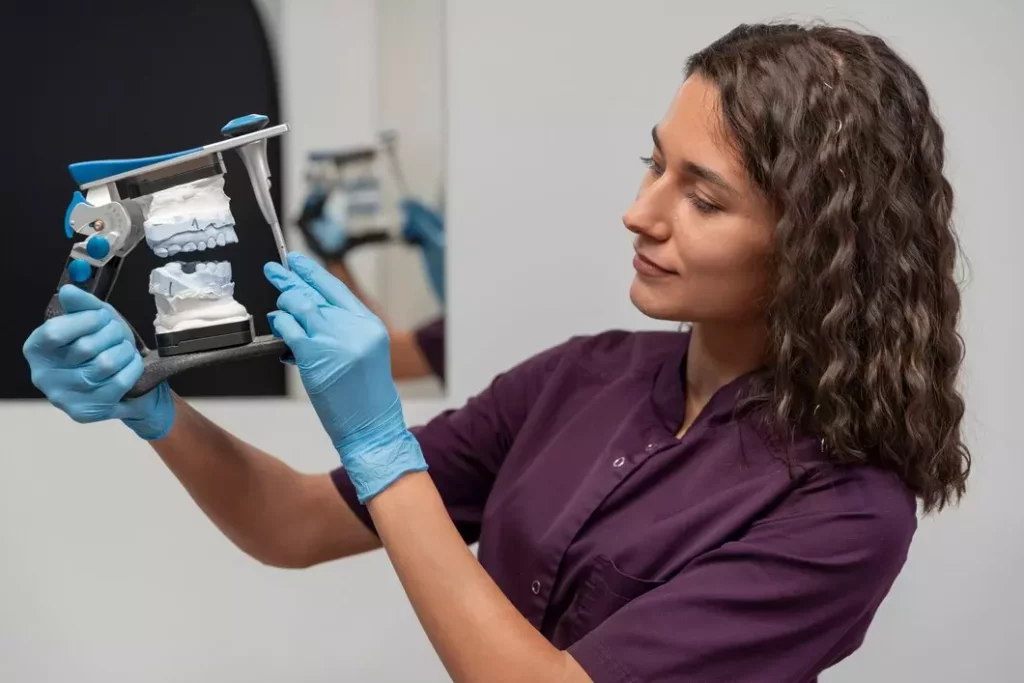
Information
Bone graft dental implants are a specialized technique used in implant dentistry to enhance the success and longevity of dental implants. When a patient has insufficient bone density or volume in the jawbone, a bone graft is performed to augment the area and create a suitable foundation for the dental implant.
During a bone graft dental implant procedure, bone graft material is placed in the area where the implant will be inserted. This graft material can be sourced from the patient’s own body (autograft), a donor (allograft), animal sources (xenograft), or synthetic materials. The graft material serves as a scaffold for new bone growth, allowing the existing bone to fuse and integrate with the graft over time.
Doctor
Dr. Doktorman offers full range of services in the scope of general dentistry, such as cosmetic composite fillings, root canals, removable dentures of multiple designs, crown and bridges, surgical services and gum treatment. Dr. Doktorman completed implant residency in NYU. All phases of implant dentistry are performed in our office. We offer implant placement, variety of implant supported restorations both fixed and removable. Our office offers a FREE consultation for the patients interested in implant placement and restorations.

Testimonials
Trustindex verifies that the original source of the review is Google. I have been to many dentists throughout the years, mainly because as a kid too young adult, I did not take good care of my teeth, so now im paying the price. This is by far the best dentist i have ever been to, he redid the work of a bad crown from another dentist and also did an implant for me, during the entire process of both procedures during different time frames he made me feel comfortable and took his time with me, answering all my questions. It's refreshing to have a dentist who doesn't rush from door to door, taking in multiple patients at once. After the implant tooth was put in, if I needed more adjustments, he let me know to call, and he will make time to get it adjusted for me. Also, so far, appointments have been very spot on, at most 5 - 10 min wait, but sometimes I get in even earlier. This is my main dentist now for all work going forward.Trustindex verifies that the original source of the review is Google. I’ve been a regular patient of Dr. Doctorman for over a decade, and I can confidently say he’s an exceptional dentist. His expertise and attention to detail have resolved all my dental issues, and his commitment to thorough, personalized care is unmatched. I consistently receive top-notch treatment during my regular checkups, and his friendly demeanor makes each visit pleasant. Dr. Doctorman is the ultimate professional in his field, and I highly recommend him to anyone seeking reliable and effective dental care.Trustindex verifies that the original source of the review is Google. Excellent service, always patient with me to ease my nerves during any process and kind staff. Highly recommend!Trustindex verifies that the original source of the review is Google. I’ve been going to Dr. Doktorman for a few years now, and he’s been great. He’s really good at what he does and always makes sure I understand what’s going on with my teeth. I used to feel a little nervous about going to the dentist, but he’s so calm and friendly that it’s not a big deal anymore. The office is nice and clean, and the staff is always polite and helpful. I highly recommend Dr. Doktorman if you’re looking for a dentist who’s professional and easy to talk to. He’s been a great dentist, and I’m extremely happy with the care that I’ve received.Trustindex verifies that the original source of the review is Google. Dr Doktorman has been my dentist for nearly 10 years. He is always very courteous and professional. I always recommend him to friends and family.Trustindex verifies that the original source of the review is Google. I have been Dr. Dokterman's patient for years and will continue to be. From typical cavity fillings to root canals his work is top notch. He and his staff are also welcoming and professional.Trustindex verifies that the original source of the review is Google. Dr. Doktorman has great customer service and he and his dental staff do wonderful dental work!Trustindex verifies that the original source of the review is Google. Excellent clinic. I am a patient of Doctorman for the last five years, his very profesional and a good doctor. Staf its very helpful and friendly I would recommend Prestige dental to all my friends and family.Trustindex verifies that the original source of the review is Google. I was referred by a good friend. I Never have to wait later than my appointment time. The office is very clean and the staff is amazing. Dr. Doktorman is very informative and knowledgeable, he explains everything in details. I can’t wait to go to my next cleaning.Trustindex verifies that the original source of the review is Google. I can't say enough great things about Dr. Doktorman! He is incredibly caring and truly goes above and beyond for his patients. I always appreciate how he follows up after appointments to ensure everything is going well—it's clear he genuinely cares about his work and his patients' well-being. He is honest, trustworthy, and takes the time to listen to my concerns, making me feel heard and valued as a patient. I trust him wholeheartedly, not just with my care but with my entire family's as well.
Information
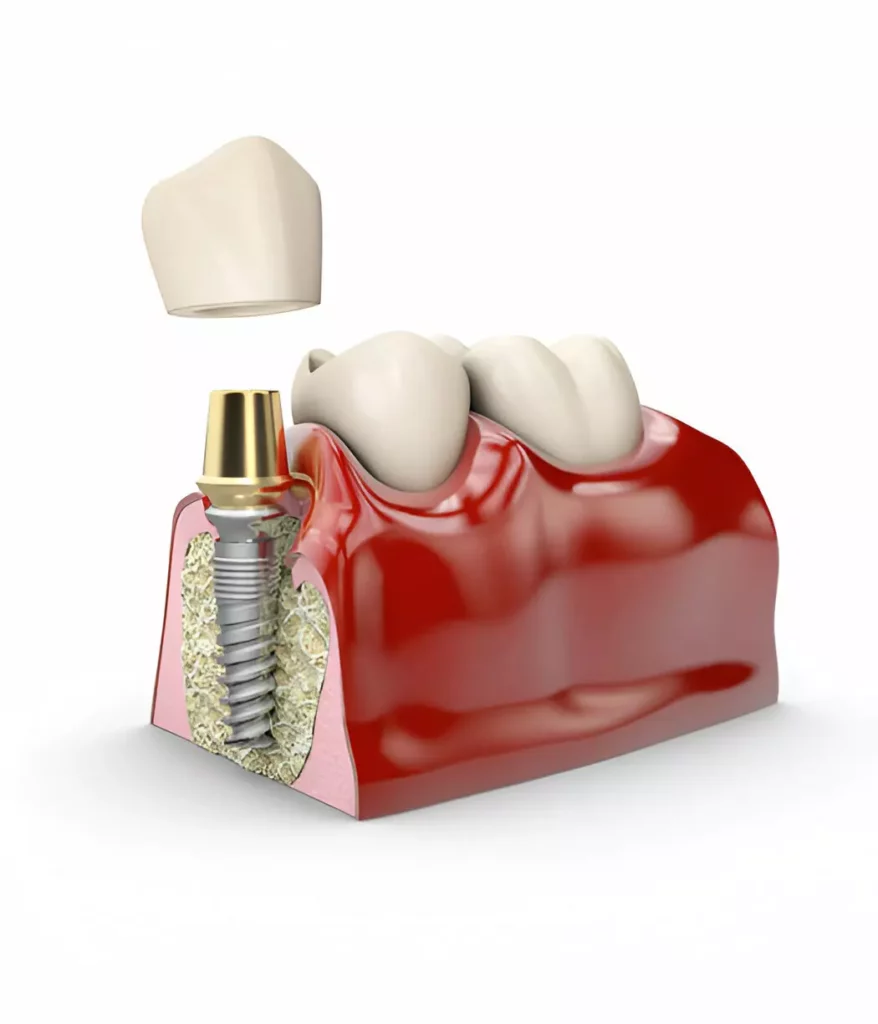
Bone grafting significantly improves the success rate of dental implants. The graft material stimulates the growth of new bone, allowing for better integration and stability of the implant.
Bone graft dental implants provide a solid foundation for the replacement tooth or teeth. This promotes natural aesthetics and enables normal chewing and speech functions, enhancing overall oral functionality.
Dental implants with bone grafting help preserve the jawbone’s integrity and prevent the sagging or collapsing of facial features that can occur with significant bone loss.
With bone grafting, patients with compromised bone structure can still benefit from dental implants. It expands the scope of treatment options, allowing more individuals to enjoy the advantages of dental implants.
By restoring bone density and supporting dental implants, bone grafting promotes long-term oral health. It prevents further bone loss, maintains the integrity of neighboring teeth, and supports the overall stability of the bite.
Dental implants provide a natural-looking and permanent solution for tooth replacement. They can restore a patient’s confidence in their smile and overall appearance, leading to improved self-esteem and a better quality of life.
Information
Determining whether you need bone grafts for dental implants involves several considerations. Here’s a list of factors to help you understand if bone grafting might be necessary before proceeding with dental implants:
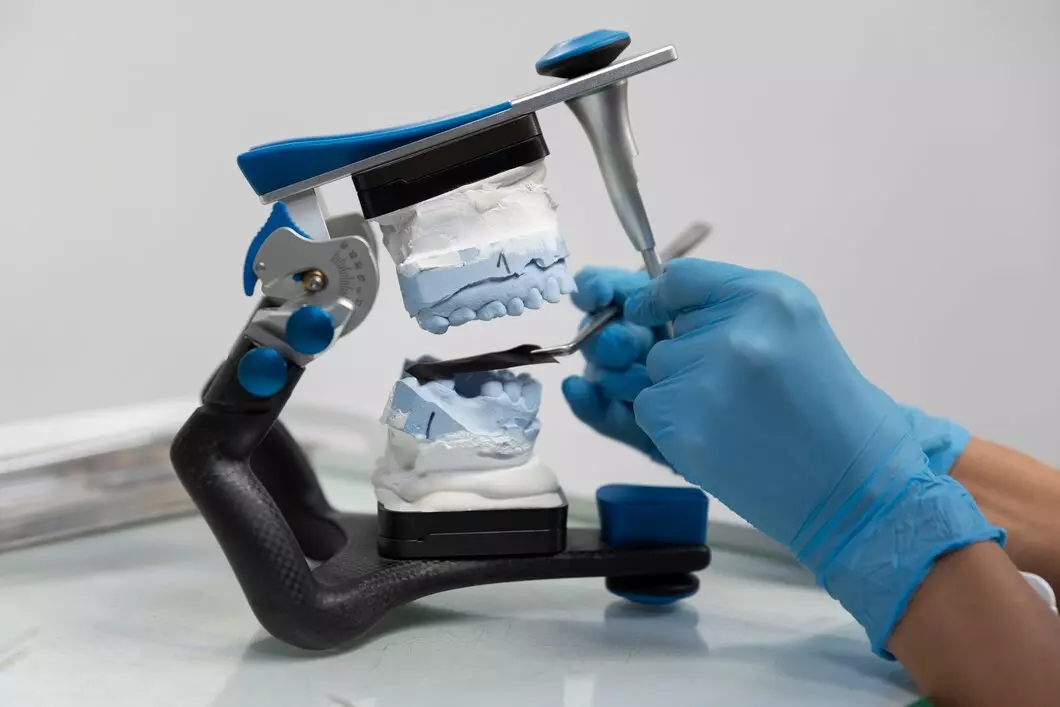
Information
Before
After
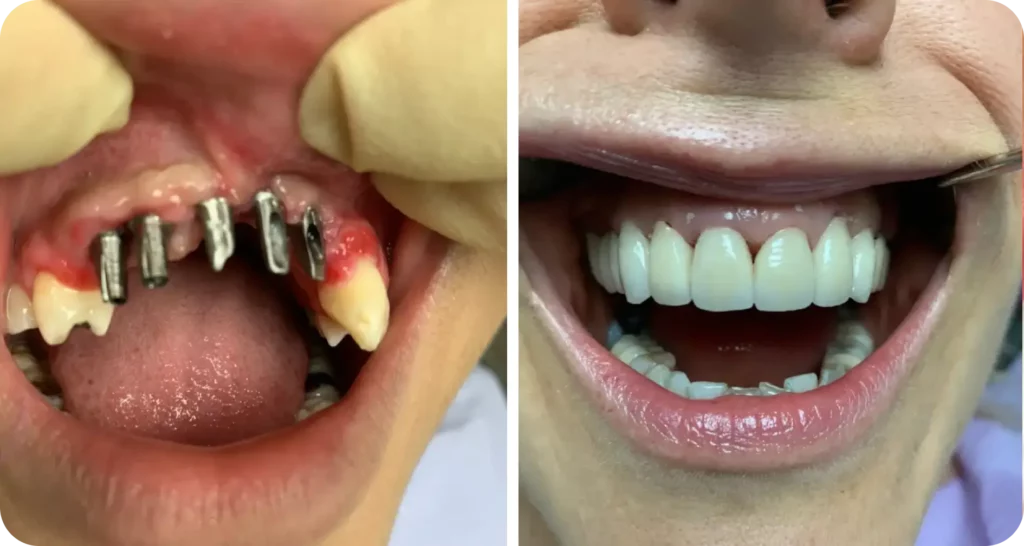
Before
After
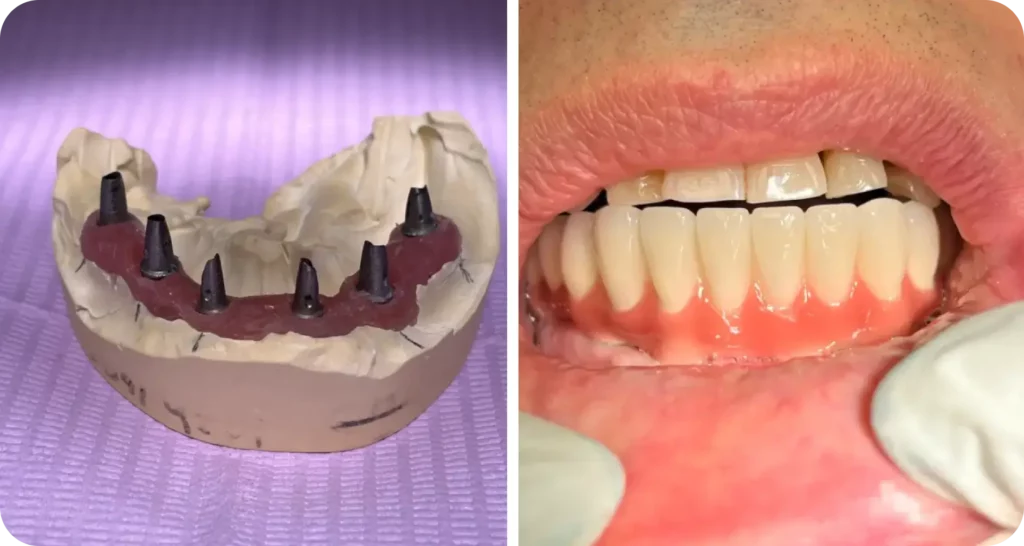
Information
Bone grafting is a vital component of the dental implant process, as it helps create a suitable environment for successful implant placement. There are various bone grafting techniques available, each utilizing different types of graft materials. Let’s explore the common bone grafting techniques used in dental implants:
Autografts involve using the patient’s own bone as the graft material. During this procedure, bone is typically harvested from another area of the patient’s body, such as the hip, jaw, or chin. Autografts are advantageous as they have the potential for excellent integration and minimal risk of rejection since the graft material comes from the patient’s own body. However, it requires an additional surgical site and can result in postoperative discomfort at the donor site.
Xenografts involve using bone graft material derived from animal sources, typically bovine or porcine origins. The animal bone is specially processed to remove organic components, leaving behind the mineral matrix. Xenografts provide a framework for new bone formation and gradually get replaced by the patient’s bone over time. They offer good biocompatibility, ease of use, and successful integration with the patient’s natural bone. Xenografts are a suitable alternative for patients who prefer non-human sources or have limited autograft or allograft options.
Synthetic bone grafts are man-made materials designed to mimic the properties of natural bone. They are composed of biocompatible materials such as calcium phosphate or calcium sulfate, which promote bone growth and regeneration. Synthetic grafts are available in different forms, including granules, putties, and blocks, allowing for versatility in surgical applications. These graft materials provide a scaffold for new bone formation and gradually resorb over time, being replaced by the patient’s natural bone. Synthetic bone grafts offer a predictable outcome, eliminate the need for harvesting bone from other sources, and provide a cost-effective option for bone grafting procedures.
The choice of bone grafting technique depends on various factors, including the patient’s overall health, availability of donor sites, bone quality and quantity, and the surgeon’s expertise. The dentist at Dr. Edward Doktorman will evaluate your specific needs and recommend the most suitable technique to ensure optimal results.
Indications
Contraindications
Before proceeding with dental implant placement, it is crucial to evaluate the quality and quantity of the existing bone in the jaw. Adequate bone support is essential for the long-term success of dental implants. Here are the key aspects involved in evaluating bone deficiency for dental implants:
The quality and quantity of available bone play a vital role in determining the feasibility of dental implant placement. The bone should be dense and have sufficient volume to support the implant and withstand the forces of chewing. Factors such as bone density, height, width, and overall bone health are assessed to determine the suitability of dental implants.
Diagnostic imaging techniques are used to evaluate the bone structure and identify any deficiencies or irregularities. X-rays, such as panoramic radiographs or cone beam computed tomography (CBCT) scans, provide detailed images of the jawbone, allowing dentists to assess bone density, height, and width accurately. These imaging techniques help in determining the precise location and angulation of the implant placement and aid in the diagnosis of any underlying bone pathology.
In cases where bone deficiency is identified, bone grafting procedures may be necessary to augment the existing bone and provide a solid foundation for dental implants. Bone grafting involves placing additional bone material in the deficient areas to stimulate new bone growth. Candidates for bone grafting typically include individuals with:
Identifying the need for bone grafting is crucial to ensure the long-term success of dental implants. Bone grafting procedures help create an optimal environment for implant placement by enhancing bone density and volume.
During the evaluation process, the dentist will thoroughly assess your bone quality and quantity using advanced imaging techniques. They will consider factors such as your overall oral health, medical history, and specific treatment goals to determine the most suitable approach for dental implant placement.
At Dr. Edward Doktorman in Clifton, NJ, our experienced dental professionals specialize in evaluating bone deficiency for dental implants. We utilize advanced diagnostic imaging technologies and comprehensive evaluations to determine the best treatment plan for each patient. Our goal is to provide you with a successful and long-lasting dental implant solution that restores your smile and enhances your oral health.
Bone grafting is a crucial step in the dental implant process, as it provides the necessary foundation for successful implant placement. The procedure involves augmenting deficient or damaged bone with graft material to promote new bone growth and create a stable environment for dental implants. Let’s explore the key steps involved in bone grafting procedures for dental implants:
Proper postoperative care, including adherence to oral hygiene practices and any prescribed medications, is crucial for successful healing and graft integration. The dentist will provide specific instructions to follow during the recovery period. Regular follow-up appointments will be scheduled to monitor your progress and determine the appropriate timing for dental implant placement.
Before undergoing a Bone Graft Dental Implant procedure, it’s crucial to consider any underlying medical conditions that may affect your treatment. Patients with uncontrolled diabetes, autoimmune disorders, or those undergoing radiation therapy may face a higher risk of complications. Smoking and poor oral hygiene can also reduce the success rate of the bone graft and implant procedure. At Dr. Doktorman’s office in Clifton, NJ, we will thoroughly review your medical history to identify any potential risks and ensure that Bone Graft Dental Implants are the right option for you. If you have any concerns about your health, our team is here to provide expert guidance and support.
Proper oral care after a Bone Graft Dental Implants procedure is vital to ensure successful healing and long-term results. Following these guidelines can help you protect the surgical site and support recovery:
By adhering to these care tips, you can support the success of your Bone Graft Dental Implants and prepare your mouth for the next stage of the implant process.
After a successful bone grafting procedure, the next step in the dental implant process is the placement of the actual dental implant. This stage requires precision and expertise to ensure optimal results. Let’s explore the key aspects involved in dental implant placement after bone grafting:
The timing of dental implant placement following bone grafting depends on several factors, including the type of graft material used, the size of the graft, and the quality of bone regeneration. In some cases, immediate implant placement may be possible, where the implant is inserted at the same time as the bone grafting procedure. However, in most cases, a healing period of several months is necessary to allow the graft material to integrate and the bone to regenerate before implant placement.
Dental implant placement is typically performed under local anesthesia. During the procedure, an incision is made in the gum tissue to expose the underlying bone. A specialized drill is then used to create a small hole in the bone, precisely following the treatment plan and considering factors such as the position and angulation of the implant. The dental implant, which is a titanium post resembling a screw, is carefully inserted into the prepared site. The gum tissue is sutured back into place, allowing for the healing process to begin.
One of the critical factors for long-term implant success is achieving implant stability and osseointegration, especially with endosteal implants. Osseointegration refers to the direct fusion of the dental implant with the surrounding bone, creating a strong and stable connection. During the healing period, which typically lasts several months, the bone cells gradually grow and adhere to the implant surface, integrating the implant into the jawbone. The implant stability and osseointegration process ensure that the implant can withstand the forces of chewing and provide a solid foundation for the final restoration.
At Dr. Edward Doktorman in Clifton, NJ, we are passionate about restoring smiles and improving oral health through bone graft dental implants. Our experienced team, consisting of a highly skilled dentist in Clifton, is dedicated to providing the highest standard of care, utilizing advanced techniques and technologies to achieve exceptional results. We understand the significance of bone grafting in ensuring the long-term success of dental implants. Contact us to schedule a consultation.
At Dr. Doktorman’s office in Clifton, NJ, we understand that the cost of Bone Graft Dental Implants is an important consideration for our patients. The overall cost of the procedure can vary based on several factors, including the extent of the bone graft, the number of implants required, and the complexity of your case. During your consultation, our team will provide you with a personalized treatment plan and a detailed cost estimate.
We strive to make Bone Graft Dental Implants as affordable as possible by offering flexible payment options and working with various insurance providers. Our staff is available to assist you with any questions regarding your insurance coverage and payment plans, ensuring you have a clear understanding of the costs involved. If you’re concerned about the affordability of your procedure, we’re here to guide you through your options and help make your dental care more accessible.
At Dr. Doktorman’s office, we are committed to making your Bone Graft Dental Implants treatment affordable and accessible. We accept a wide variety of insurance plans, including:
We also work with many other insurance providers to help cover your Bone Graft Dental Implants procedure. If you have any questions about your coverage or need assistance understanding your insurance benefits, our team is here to help you navigate the process and maximize your coverage.
Dr. Edward Doktorman, DDS, has been consistently recognized by the Consumers’ Research Council of America for his excellence in family, cosmetic, implantology, and general dentistry, earning multiple “America’s Top Dentists” awards from 2014 to 2017.
List of Certificates:
FAQ
Bone grafts are necessary for dental implants when the jawbone is not thick enough or is too soft. Without a solid bone foundation, dental implants would not have the stability and support they need to function like natural teeth. Bone grafts ensure the implant will be successful and durable over time.
The bone graft dental implant procedure typically involves several steps:
Healing times can vary significantly depending on the type of bone graft, the patient’s health, and the complexity of the procedure. Generally, it can take anywhere from three to nine months for the bone graft to integrate with the jawbone sufficiently for implant placement.
Need a consult?